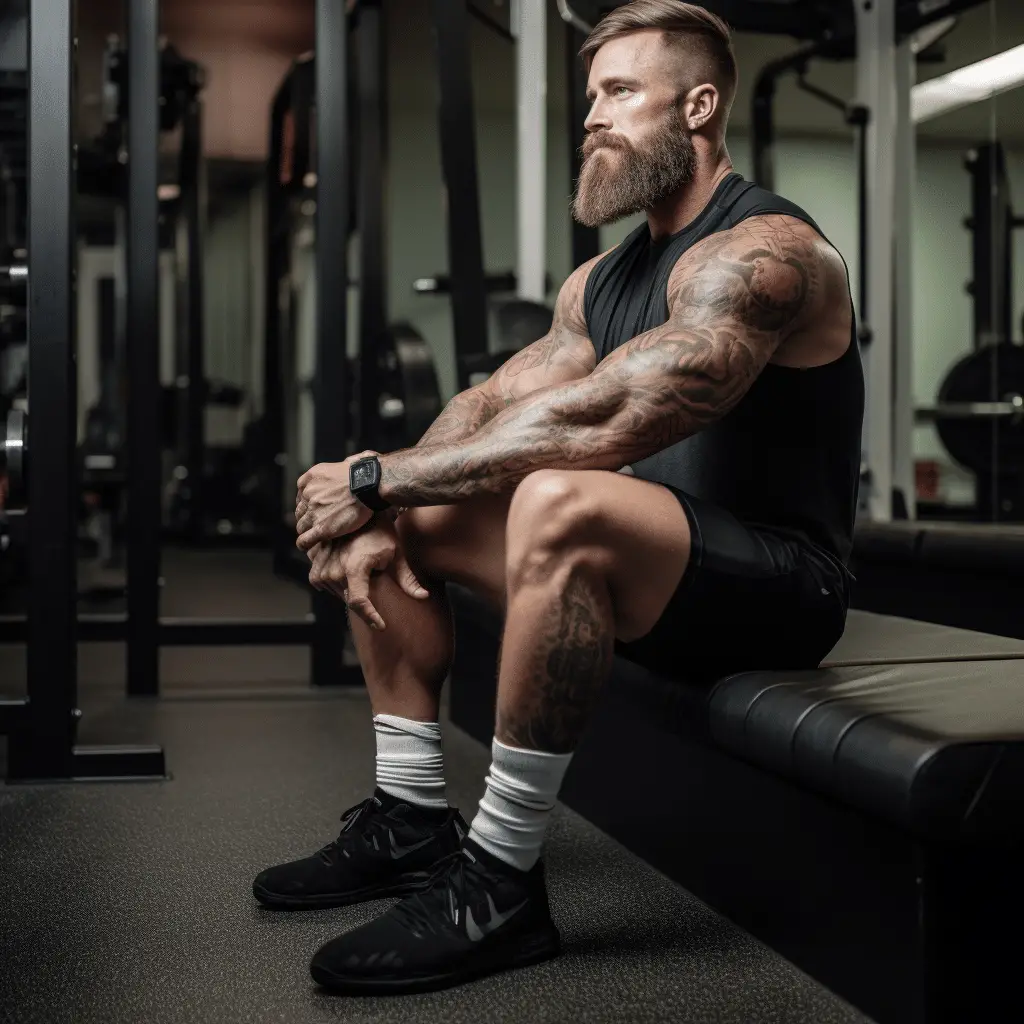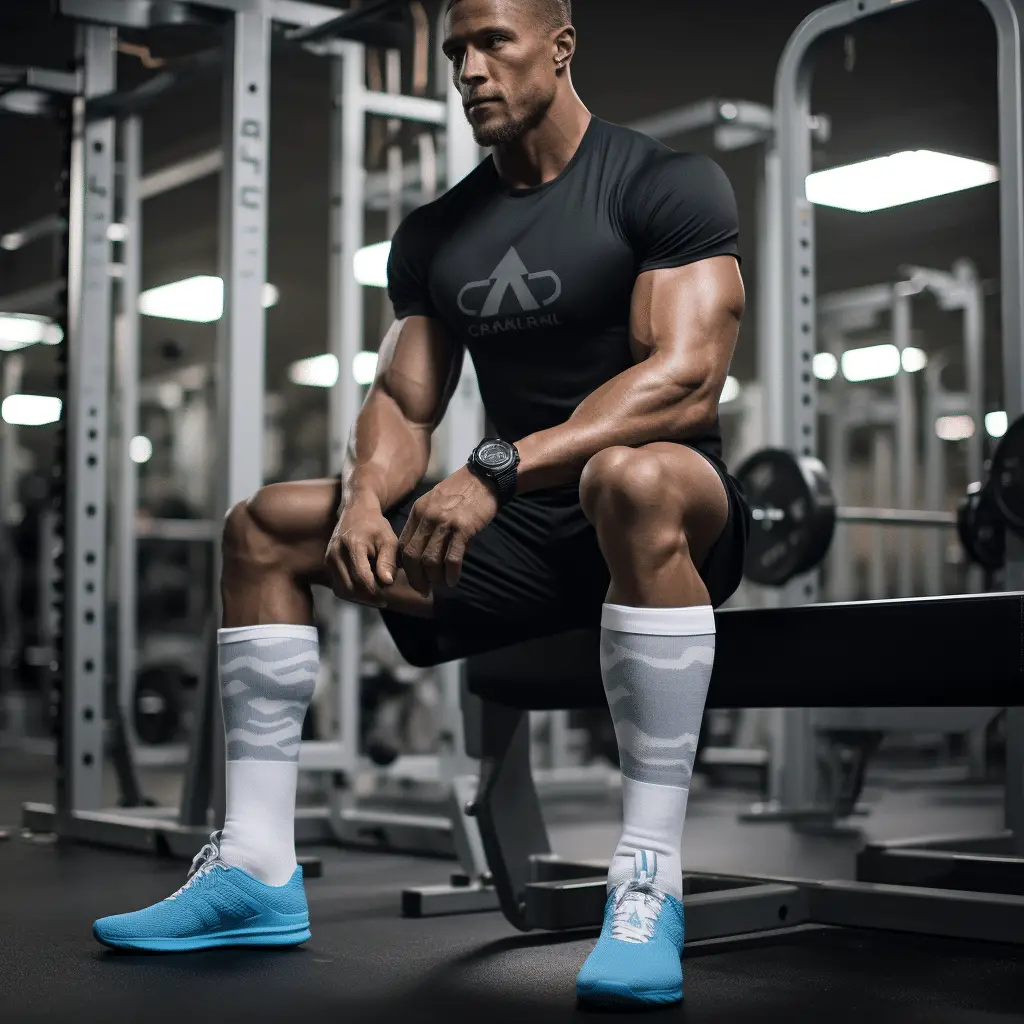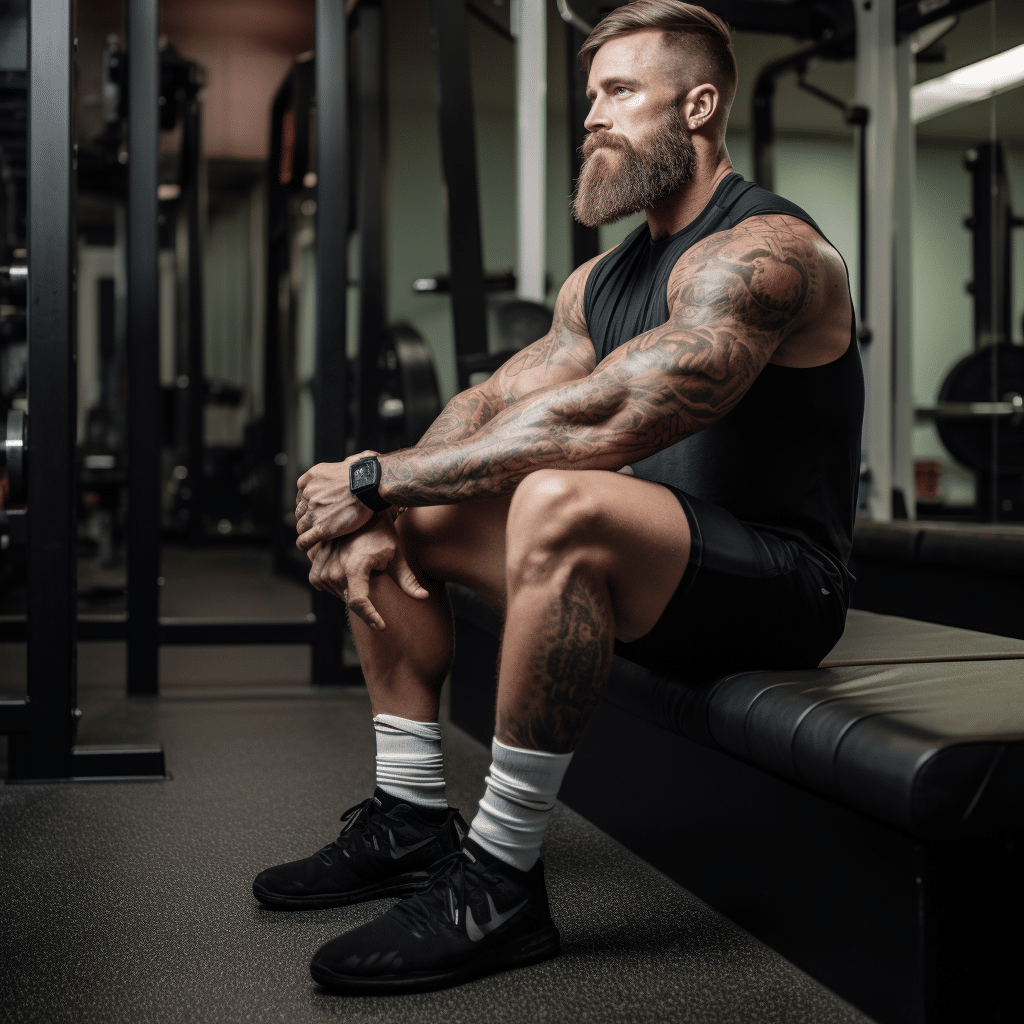When it comes to bodybuilding, well-developed calf muscles can make a significant difference in overall aesthetics and athletic performance. Building impressive calves may seem challenging, but with the right exercises and training tips, anyone can achieve noticeable muscle growth. In this section, I will guide you through the best calf exercises for muscle growth and provide effective training tips specifically tailored for bodybuilders.
Key Takeaways:
- Genetics may play a role in muscle development, but proper training and mindset are essential for building impressive calves.
- The calf muscle is composed of the gastrocnemius, soleus, and tibialis anterior, each with its own function in lower leg movement.
- Effective calf exercises for bodybuilders include standing calf raises, seated calf raises, leg press calf raises, single-leg calf raises, and tibialis raises.
- Standing calf raises target the gastrocnemius muscle, while seated calf raises focus on the soleus muscle.
- Additional calf exercises such as leg press calf raises and single-leg calf raises can provide overall mass-building and address muscle imbalances.
- Include tibialis raises in your calf training routine to add mass to the front of the lower leg and prevent injuries.
- Customize your calf workouts based on your goals and abilities, incorporating different exercises, rep ranges, and training principles.
- Ensure quality form, range of motion, rest periods, and proper nutrition and recovery for optimal muscle growth.
The Standing Calf Raise: A Classic Exercise for Calf Mass

The standing calf raise is a time-tested exercise that has been a staple in calf muscle workouts for bodybuilding enthusiasts for many years. This exercise specifically targets the gastrocnemius muscle, one of the major muscles in the calf region, helping to build overall size and strength. When performed correctly and consistently, standing calf raises can contribute to impressive calf muscle development.
To perform standing calf raises, you’ll need a calf raise machine or a sturdy platform to stand on. Here’s how to do it:
- Position yourself with your shoulders under the pads of the calf raise machine or stand on the edge of the platform, holding a dumbbell or barbell for added resistance if desired.
- Start with your shoulders under the calf raise machine pads or on the platform edge using a dumbbell or barbell for resistance.
- Put your toes on the calf block or platform edge and your heels off.
- Slowly raise your heels as high as possible, contracting your calf muscles at the top of the movement.
- Hold the contraction for a brief moment, then lower your heels back down to the starting position.
- Repeat for the desired number of repetitions.
It’s important to maintain control throughout the exercise and avoid using momentum or bouncing to lift the weight. Focus on the mind-muscle connection, really feeling the contraction in your calves with each repetition.
The standing calf raise is a classic exercise that isolates the calf muscles, allowing for targeted growth and development. By incorporating this exercise into your calf workouts for bodybuilding, you can effectively work the gastrocnemius muscle and achieve greater calf mass.
Remember, muscle building requires consistency. Try standing calf raises with other effective exercises like seated, leg press, and single-leg raises to target all areas of the calves for well-rounded development. Remember to change the weight and repetitions to challenge and overload your muscles.
The Benefits of Standing Calf Raises
Standing calf raises offer several benefits beyond simply building muscle mass. These benefits include:
- Improved ankle stability and balance
- Enhanced athletic performance, especially in activities that require explosive lower body movements like jumping and sprinting
- Strengthening of the tendons and ligaments in the lower leg, reducing the risk of injury
- Increased range of motion in the ankle joint, which can contribute to better overall mobility and flexibility
Standing calf raises can help you build strong calf muscles. They can also provide additional benefits that boost your fitness and athletic performance.
| Exercise | Primary Targeted Muscle | Other Muscles Involved |
|---|---|---|
| Standing Calf Raise | Gastrocnemius | Soleus, Tibialis Anterior |
| Seated Calf Raise | Soleus | Gastrocnemius |
| Leg Press Calf Raise | Gastrocnemius, Soleus | – |
| Single-Leg Calf Raise | Gastrocnemius, Soleus | – |
| Tibialis Raise | Tibialis Anterior | Gastrocnemius, Soleus |
By incorporating a variety of calf exercises into your training routine, you can ensure balanced muscle development and maximize your calf muscle growth. Remember to consult with a fitness professional or trainer to customize your workouts based on your individual goals and abilities. With consistent effort and proper form, you can achieve impressive calf muscles that highlight your dedication to bodybuilding.
The Seated Calf Raise: Targeting the Soleus Muscle
The seated calf raise is an effective exercise for targeting the soleus muscle, which lies underneath the gastrocnemius. This exercise is particularly beneficial for bodybuilders looking to add width and thickness to their calves. By isolating the soleus, the seated calf raise helps to enhance the overall appearance and symmetry of the lower leg.
To perform the seated calf raise, start by sitting in a seated calf raise machine with the machine’s pads on your thighs and your feet on the foot platform. Make sure your knees are bent at a 90-degree angle. Press the balls of your feet into the platform to raise your heels, contracting your calves. Hold the contraction briefly, then slowly lower your heels back down to the starting position. Repeat for the desired number of repetitions.
It’s important to maintain proper form throughout the exercise, focusing on the controlled movement of the calves. Avoid using momentum or bouncing at the bottom of the movement, as this can reduce the effectiveness of the exercise. Additionally, it’s important to use an appropriate weight load that allows for proper execution of the exercise while still challenging the muscles.
| Seated Calf Raise | Target Muscles | Primary Benefits |
|---|---|---|
| Seated Calf Raise | Soleus, Gastrocnemius | Increased width and thickness of calves |
The seated calf raise should be part of a well-rounded calf training program that includes standing, leg press, single-leg, and tibialis raises. Different exercises, rep ranges, and training principles can boost muscle growth and prevent plateaus. To maximize calves muscle growth, prioritise form, range of motion, nutrition, and recovery.
Additional Calf Exercises and Training Tips for Bodybuilders

As a bodybuilder, it’s important to have a well-rounded calf workout routine to maximize muscle growth and strength. While standing and seated calf raises are great exercises, there are additional exercises that can take your calf training to the next level.
One effective exercise to include in your routine is leg press calf raises. By using the leg press machine and positioning your feet on the platform, you can target your calf muscles from a different angle and stimulate new muscle fibers. This exercise is especially beneficial for overall mass-building in the calves.
Another exercise to consider is single-leg calf raises. This exercise helps correct any imbalances between your calves and improves balance in the lower legs. By performing the exercise one leg at a time, you can focus on each calf individually and ensure equal development.
Don’t forget about the tibialis anterior muscle, located at the front of your lower leg. Neglected by many, this muscle can add mass and contribute to overall lower leg strength and stability. Incorporate tibialis raises into your routine to strengthen this muscle and prevent injuries.
When developing your calf workouts, remember to personalize them to your unique goals and skills. Experiment with different exercises, rep ranges, and training philosophies like the Dramatic Transformation Principle (DTP), FST-7, or German Volume Training. Prioritize good form, full range of motion, suitable rest intervals, and a balanced nutrition and recovery plan to enhance muscle growth and optimize results.
FAQ
Can genetics affect calf muscle development?
Genetics can play a role in muscle development, including the calf muscles. However, with the right training program and mindset, anyone can build impressive calves.
What are the main muscles involved in calf development?
The calf muscle is made up of the gastrocnemius, soleus, and tibialis anterior, each with its own function in lower leg movement.
What are some effective exercises for strengthening and building calf muscles?
Standing calf raises, seated calf raises, leg press calf raises, single-leg calf raises, and tibialis raises are all effective exercises for strengthening and building the calf muscles.
How do I perform standing calf raises correctly?
Stand with your shoulders under the pads of a calf raise machine, with the balls of your feet on the calf block. Raise your heels as high as possible, then lower them back down with control. Be sure to avoid bouncing or flexing your toes during the movement.
What is the seated calf raise exercise and how does it target the muscles?
The seated calf raise is an effective exercise for targeting the soleus muscle, which lies underneath the gastrocnemius. Sit in a seated calf raise machine with the machine’s pads on your thighs and your feet on the foot platform. Press the balls of your feet into the platform to raise your heels, then lower them back down. This exercise adds width and thickness to the calves when performed correctly.
Are there any other exercises that can help strengthen and build calf muscles?
In addition to standing and seated calf raises, leg press calf raises provide a great overall mass-building exercise, while single-leg calf raises help correct imbalances and improve balance in the lower legs. Tibialis raises, often neglected, can add mass to the front of the lower leg and aid in injury prevention.
How should I customize my calf workouts?
It’s important to customize calf workouts based on individual goals and abilities, incorporating different exercises, rep ranges, and training principles like Dramatic Transformation Principle (DTP), FST-7, and German Volume Training. Remember to prioritize quality form, range of motion, rest periods, and proper nutrition and recovery to support muscle growth.
Source Links
- https://www.bodybuilding.com/content/target-training-series-transform-your-calves-into-bull-sized-muscle-monsters.html
- https://www.bodybuilding.com/fun/one-move-for-big-calves-standing-calf-raise.html
- https://www.issaonline.com/blog/post/top-six-exercises-for-building-bigger-calves

